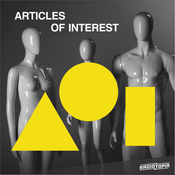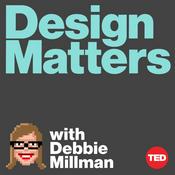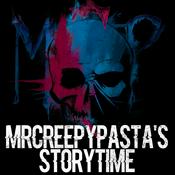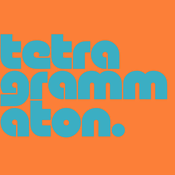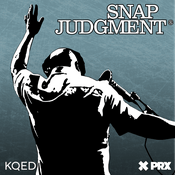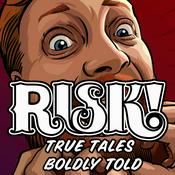97 episodes

What, How & Why We're Reading
23/12/2025 | 1h 19 mins.
with @smc90 @rhackett @stephbzinn @Tim_OrgIn a now-annual tradition, the a16z crypto editorial team discuss themes (and picks) from a16z crypto's latest reading lists, as well as books we keep re-reading, childhood favorites, classics, adaptations on adaptations — in book and movie form! — and much more.We cover:What genres are we reading now, how, and why?How is technology — from AI and ChatGPT to the internet and audio — changing reading?Why are certain themes in the zeitgeist right now?Is all non-fiction just fiction now (and should we lean into this for education)?Are the kids alright?From irony, truth, and why context matters, to Machiavelli, Formula 1, and nautical non-fiction this episode has it all... check out our "what we're reading" lists, podcasts, and more here:https://a16zcrypto.com/posts/tags/what-were-readingHighlights(0:00) Overview of the summer reading list(0:33) The list goes beyond tech and business books(2:02) Formula One, optimization, and recurring reading themes(3:12) Favorite picks: ASML, semiconductors, and industrial history(4:50) Memoirs, grief, and reading for emotional understanding(6:40) Why nonfiction feels broken — and what replaces it(8:20) Adventure, boats, and narrative nonfiction(11:39) Letters, primary sources, and Renaissance writing(17:30) Antimimetics, ideas that resist spreading, and fresh nonfiction(19:00) Mark Twain, irony, influence, and unreliable narrators(24:16) Podcasts/the internet as book discovery engines(26:10) The internet replaces nonfiction?(27:31) Anne of Green Gables and its effects(30:21) The role of the author in fiction vs. nonfiction(32:00) Historical fiction, context, and why it still matters(38:12) Machiavelli and interpreting texts across time(45:43) Gothic fiction, Dracula, and modern adaptations(51:00) Film adaptations and creative ownership(55:16) Audiobooks, narration, and reading styles(1:00:54) Reading aloud, poetry, and rhythm(1:06:44) Childhood books that shape worldview(1:15:24) Young adult books worth revisiting(1:18:29) Closing reflections and where to find the full list***Follow a16z crypto on...XLinkedInSpotifyApple PodcastsYoutube📩 Subscribe for more industry reports, trend updates, news analysis, builder guides, and other resources: 🎙️ Like, subscribe, comment, share the show.***As always, none of the following should be taken as investment, business, legal, or tax advice. Please see a16z.com/disclosures for more important information, including a link to a list of our investments. Hosted by Simplecast, an AdsWizz company. See pcm.adswizz.com for information about our collection and use of personal data for advertising.

From Wallets to Super Apps: The Internet's New Interface (with Phantom CEO)
19/12/2025 | 41 mins.
with @BChillman @jay_drainjr @rhackettCrypto wallets are no longer just wallets. They’re the front door to a decentralized internet.In this episode, Phantom CEO Brandon Millman joins a16z crypto Investment Partner Jay Drain and host Robert Hackett to unpack how crypto wallets are evolving into full-blown consumer finance platforms — and why they may be the most credible candidates to become the internet's next super apps.We explore Phantom’s journey from a Solana-first wallet to a multi-chain platform, why wallets are uniquely positioned to win trust around money, and how features like onchain trading, perps, social feeds, prediction markets, and payments are reshaping what people expect from a consumer finance app.The conversation also dives into:Why starting with finance may be a better path to a super app than starting with socialHow Phantom thinks about UX, trust, and security in cryptoThe rise of perpetual futures (perps) and prediction marketsWhat the FTX collapse meant for Solana — and the counterintuitive silver liningWhether AI agents could one day replace apps and browsersIf you’re curious about where crypto, fintech, and consumer apps are headed next — and why wallets may become the most important interface on the internet — this episode is for you.Highlights01:32 – The evolution and role of crypto wallets2:42 – Wallets vs. browsers: the right mental model12:03 – Phantom’s origin story and the Solana bet19:05 – Perps, trading, and product-market fit26:08 – UX, trust, and consumer finance30:52 – Social feeds, discovery, and network effects35:21 – Crypto as "black hole" absorbing finance37:09 – AI agents and the future of walletsFollow a16z crypto on...XLinkedInSpotifyApple PodcastsYoutube📩 Subscribe for more industry reports, trend updates, news analysis, builder guides, and other resources: 🎙️ Like, subscribe, comment, share the show.***As always, none of the following should be taken as investment, business, legal, or tax advice. Please see a16z.com/disclosures for more important information, including a link to a list of our investments. Hosted by Simplecast, an AdsWizz company. See pcm.adswizz.com for information about our collection and use of personal data for advertising.

Crypto's Killer App?
10/12/2025 | 37 mins.
with @zcabrams @psneville @rhackettIn this episode, Robert Hackett sits down with Sean Neville, cofounder of Circle and co-creator of the USDC stablecoin, and Zach Abrams, founder of Bridge (now part of Stripe), for a deep dive into the real story behind stablecoins, finding product-market fit, and the future of payments infrastructure.They explore the earliest days of USDC — when stablecoins were far from obvious and regulatory frameworks didn’t exist. Sean shares how his conviction in “money running at internet speed” helped shape a multibillion-dollar asset. Zach recounts Bridge’s pivot from NFTs to stablecoin infrastructure — and how his business has changed since joining Stripe.Together, they break down:Why stablecoins are having their moment nowWhat counts as product-market fit (and why founders rarely “feel” it)The challenges of building crypto and AI products within heavily regulated environmentsWhy new base-layer chains like Arc, Tempo, and others may be neededHow decentralization, liquidity moats, and interoperability will define the next decade of blockchain adoptionWhat the future of programmable money and AI-driven financial workflows looks likeWhether you’re a founder, a crypto-curious builder, or someone trying to understand where global payments are headed, this conversation — originally recorded live at our recent a16z crypto Founders Summit — offers insights from two operators at the center of an industry-defining transformation.Guests:• Sean Neville — Cofounder, Circle; CEO and cofounder, Catena• Zach Abrams — Founder and CEO, Bridge (acquired by Stripe)Highlights:01:26 — Origins of USDC02:44 — Why stablecoins are having their moment now04:14 — Circle’s early product experiments06:19— Surviving crypto cycles07:35 — Bridge: From NFT payments to stablecoins08:58 — What product-market fit actually feels like20:02 — Inevitability and the founder vs. employer mindset20:58 — Why Bridge joined Stripe26:18 — How AI changes company building29:38 — What students should study now30:27 — Why new payment chains (Tempo & Arc)?35:55 — Decentralization as imperativeFollow a16z crypto on...X: https://x.com/a16zcryptoLinkedIn: https://www.linkedin.com/showcase/a16zcrypto/posts/Spotify: https://open.spotify.com/show/7pMZvsNXEnb0CYcPiDQywEApple Podcasts: https://podcasts.apple.com/us/podcast/web3-with-a16z-crypto/id1622312549Youtube: https://www.youtube.com/@a16zcrypto📩 Subscribe for more industry reports, trend updates, news analysis, builder guides, and other resources: https://a16zcrypto.substack.com/subscribe/ 🎙️ Like, subscribe, comment, share the show: https://a16zcrypto.com/posts/podcast/ ***As always, none of the following should be taken as investment, business, legal, or tax advice. Please see a16z.com/disclosures for more important information, including a link to a list of our investments. Hosted by Simplecast, an AdsWizz company. See pcm.adswizz.com for information about our collection and use of personal data for advertising.

TradFi’s Tipping Point: Fidelity CEO Abigail Johnson on Stablecoins, Bitcoin, and Innovation Bets
04/12/2025 | 42 mins.
Every traditional financial institution faces the same dilemma: evolve or fall behind, build or buy. But when safety, predictability, and trust is paramount, how do traditional finance companies innovate? How do they place their innovation bets, and decide what to explore and not to explore? Fidelity Chairman and CEO Abigail P. Johnson shares an inside look into Fidelity’s decade of crypto experimentation -- from early Bitcoin mining to building foundational custody infrastructure to stablecoins and much more. Johnson shares how Fidelity explored dozens of crypto use cases; why only one initially mattered, and how a single foothold shaped a long-term institutional strategy. This episode is for anyone interested in exploring how innovation happens inside companies, how startups can partner with big institutions, how TradFi is approaching crypto in this "Year of Institutional Adoption"... and what the next decade of financial infrastructure might look like.We originally recorded it at our Founders Summit event in October 2025, in conversation with a16z crypto COO Anthony Albanese, who was the Chief Regulatory Officer of the New York Stock Exchange before joining a16z; and was previously acting superintendent of the New York State Department of Financial Services (DFS), where he signed and issued New York’s first-ever BitLicense.As a reminder, none of the following is investment, business, or tax advice; please see a16z.com/disclosures for more information. Hosted by Simplecast, an AdsWizz company. See pcm.adswizz.com for information about our collection and use of personal data for advertising.

AI, Networks, and What Makes Consumer Products Win
24/11/2025 | 43 mins.
with @cdixon @illscienceWelcome to web3 with a16z crypto. Today’s episode digs into the forces shaping the next generation of consumer software — from AI-driven tools to the new economics of apps.Joining is Chris Dixon, a16z crypto founder and managing partner and one of the firm’s original consumer investors. He sits down with a16z General Partner Anish Acharya to explore how exponential forces — like Moore’s Law, composability, and network effects — help determine which products ultimately win.They talk about what it takes to build enduring consumer apps, how tools evolve into networks, and why niche communities like early crypto and open source movements can trigger massive technological shifts.Topics covered:- What exponential forces define tech progress- Moore’s Law, composability, and network effects- How tools evolve into networks- The new economics of paid consumer software- Investing in “movements” — from 3D printing to crypto- What makes niche communities powerful- AI as a platform shift and the “idea maze”- Native vs skeuomorphic tech — and what’s next for AI interfaces- The future of open-source AI and decentralizationFollow a16z crypto on...X: https://x.com/a16zcryptoLinkedIn: https://www.linkedin.com/showcase/a16zcrypto/posts/Spotify: https://open.spotify.com/show/7pMZvsNXEnb0CYcPiDQywEApple Podcasts: https://podcasts.apple.com/us/podcast/web3-with-a16z-crypto/id1622312549Youtube: https://www.youtube.com/@a16zcrypto📩 Subscribe for more industry reports, trend updates, news analysis, builder guides, and other resources: https://a16zcrypto.substack.com/subscribe/ 🎙️ Like, subscribe, comment, share the show: https://a16zcrypto.com/posts/podcast/ ***As always, none of the following should be taken as investment, business, legal, or tax advice. Please see a16z.com/disclosures for more important information, including a link to a list of our investments. Hosted by Simplecast, an AdsWizz company. See pcm.adswizz.com for information about our collection and use of personal data for advertising.
More Arts podcasts
Trending Arts podcasts
About web3 with a16z crypto
Listen to web3 with a16z crypto, ill-advised by Bill Nighy and many other podcasts from around the world with the radio.net app

Get the free radio.net app
- Stations and podcasts to bookmark
- Stream via Wi-Fi or Bluetooth
- Supports Carplay & Android Auto
- Many other app features
Get the free radio.net app
- Stations and podcasts to bookmark
- Stream via Wi-Fi or Bluetooth
- Supports Carplay & Android Auto
- Many other app features


web3 with a16z crypto
download the app,
start listening.






